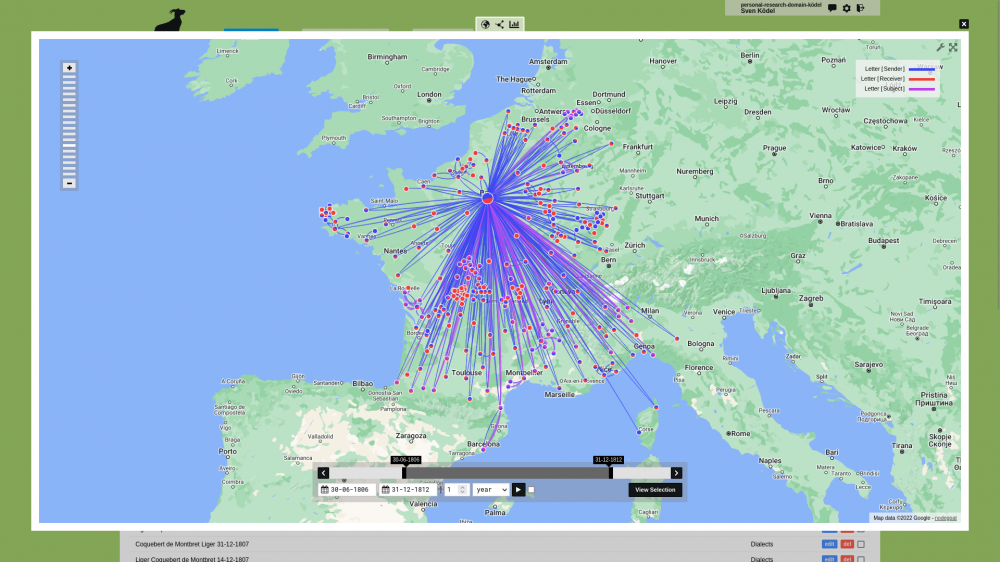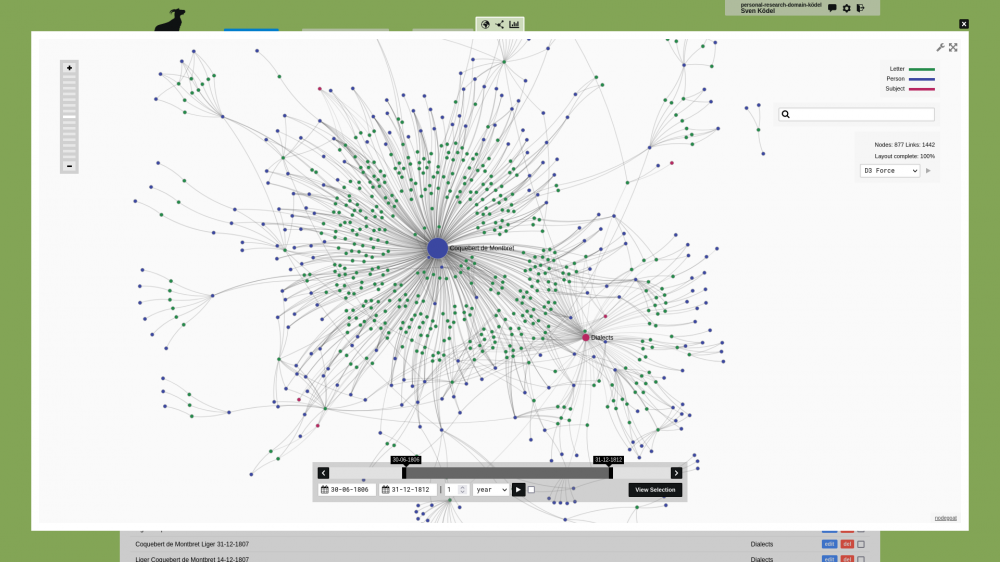Analysing Languages and Dialects spoken in the Napoleonic Empire
CORE Admin
Sven Ködel, DHI Paris Between 1806 and 1812, the French Ministry of the Interior conducted a large-scale survey by correspondence of the languages and dialects spoken in the Napoleonic Empire. For this purpose, letters were sent from Paris to the regional authorities – mainly prefectures, sub-prefectures, mayors – but also to individuals within the clergy and civil society. These agencies then initiated local networks for gathering the requested information. In total, the network includes over 500 agents who played different roles within the survey.
Visualising this network of correspondence was an obvious idea, but impossible a few years ago during the research for my PhD. With the data on the hold, nodegoat now proofed to offer far more than a simple illustration, by facilitating the interpretation of the data and thus the understanding of the survey with regard to its development over time, its objects and its agents. The chronological visualisation helps to uncover main focuses that structured the survey over the course of its six years. The representation of the total network points the central role of the ministry, on one hand, and the multitude and diversity of the local agents on the other. These latter were particularly important for the success of the survey because, unlike the central administration, they possessed the necessary local and linguistic knowledge. However, they are far less predominant in the surviving handwritten documentation than the agents in the ministry and prefectures, which has affected earlier interpretations and evaluations of the survey as a whole.
Evaluating the network with nodegoat allows an alternative approach to these sources and ultimately a different reading that does more justice to the role of local agents. A complete reconstitution of the local correspondence networks requires research in most of France’s regional archives and is yet far from complete. The visualisation with nodegoat is therefore still work in progress, the possibility to subsequently add, correct or improve data one of nodegoat’s clear advantages.
Public User Interface: nodegoat.net/viewer.p/84
